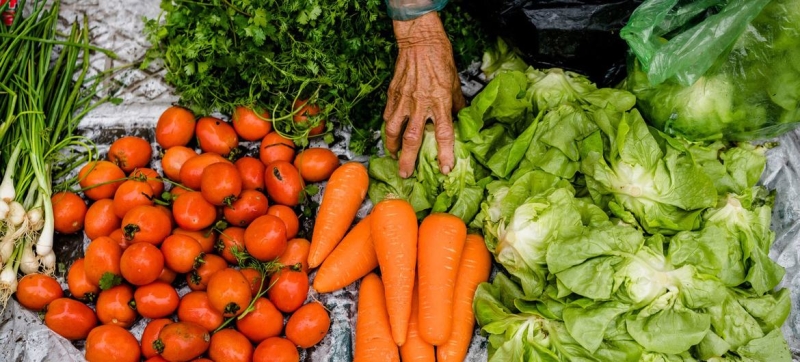
Sharp rise in food prices has forced people to compromise on the quality of their diet. Kyrgyzstan in the face of global shocks: how to improve the country’s food resilience Economic development
Over the past few years, Kyrgyzstan has faced many shocks, including the COVID-19 pandemic, changes in regional dynamics associated with Russia’s full-scale invasion of Ukraine, and climate shocks, including melting glaciers and abnormal drought in 2022-2023. All of these factors, as noted in a study by the World Food Programme (WFP), could not but affect the country’s economy and food situation.
Climate Change
Kyrgyzstan, a mountainous, landlocked country, faces serious challenges due to climate change. The country is vulnerable to natural disasters, particularly in rural areas, which are likely to continue to have negative impacts on agricultural production.
The government is making large-scale efforts to convert rain-fed land into arable land for agriculture, but this is a difficult task given that more than 90 percent of the country is mountainous. Kyrgyzstan’s internal water sources, formed by glaciers and snowmelt, are mainly used for agriculture. However, significant water losses due to aging infrastructure lead to a shortage of this resource.
Social Inequality and Migration
Achieving food system stability in Kyrgyzstan is further complicated by uneven income growth and distribution, and the economic and social impacts of the global food crisis are disproportionately felt by the poor and vulnerable, particularly those working in the informal economy.
Migration, both internal and external, is a critical factor in shaping Kyrgyzstan’s food system. About a third of the country’s population lives below the poverty line and relies on remittances, which account for a significant portion of the country’s GDP. However, since 2020, a large number of external migrants have returned to Kyrgyzstan. The country has also recently seen an influx of Russian citizens.
Of the migrants who returned to the Kyrgyz Republic in 2022, 60 percent cited COVID-19, partial mobilization in the Russian Federation, economic sanctions, security concerns, and conflicts as the main reasons for their return.
Rising Food Prices
Heavy dependence on food imports has exacerbated the food shortage problem in Kyrgyzstan. Prices for basic food products have risen sharply: in 2023, they were 60 percent higher than in 2017-2018. This has forced people to compromise on the quality of their diets, choosing more affordable, but often less nutritious foods.
In addition, children’s diets are increasingly characterized by the consumption of unhealthy foods, influenced by widespread marketing campaigns and promotions. The situation is aggravated by already established dietary trends, which are characterized by low consumption of fruits and vegetables and the predominance of starchy and sweet foods in the diet of the local population.
How to increase food system sustainability
With a growing population, declining incomes, and limited agricultural and water resources, authorities need to take proactive measures to ensure sustainability of the food system.
With the support of several UN agencies, including WFP, the government of the Kyrgyz Republic has developed a National Food Security and Nutrition Program focused on the development of clusters and value chains, as well as protection of vulnerable populations.
As WFP experts emphasize, authorities must strengthen measures to diversify food sources and improve agricultural practices and introduce new technologies, including water-saving technologies and climate-smart technology.
Supporting local producers, including farmers, increasing access to healthy foods, including through school feeding programs, and improving supply chains also play an important role in improving the sustainability of the food system. supplies.
Read also:
